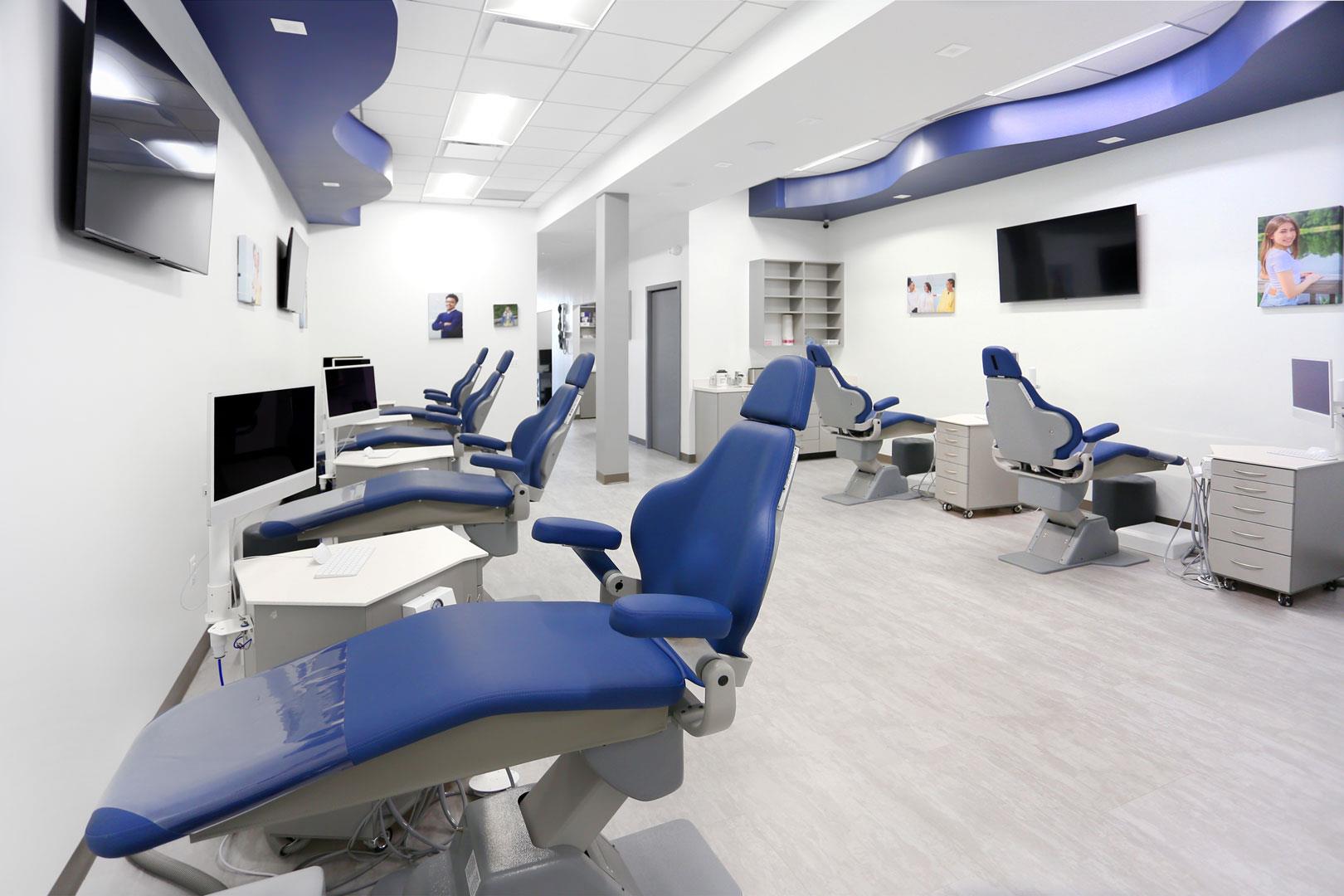Introduction
Opening a new dental office represents a major leap forward in any dental professional’s career. The opportunity to lead your own practice, shape the patient experience, and build a loyal clientele can be incredibly rewarding—but it also requires careful planning, thorough research, and strategic decision-making. In this blog post, we’ll explore top strategies to help you navigate the complex process of launching your new dental office successfully. Whether you’re fresh out of residency or an experienced dentist looking to branch out, these tips will set you on the right path.
1. Develop a Clear Vision and Brand Identity
Before you begin, clarify what you want your new dental office to stand for and how it will appeal to patients.
- Mission Statement: Define what sets your practice apart from others. Are you family-focused, or do you specialize in cosmetic or restorative treatments?
- Brand Elements: Consider a memorable logo, consistent color scheme, and tagline that convey your practice’s core values.
- Patient Experience: Think about the atmosphere you want to create—from the lobby decor and friendly staff interactions to the advanced technologies you’ll offer.
A clear vision not only shapes your internal decision-making but also helps you communicate your unique value to prospective patients.
2. Conduct Comprehensive Market Research
Understanding your target market can significantly impact the success of your new dental office.
- Demographic Analysis: Gather data on population density, average income, and age distribution in the area.
- Competition: Identify existing dental practices. What services do they offer, and how can you differentiate?
- Patient Needs: Research local healthcare trends and ask potential patients what they’re looking for—whether shorter wait times, specialized treatments, or flexible payment options.
By aligning your services and marketing efforts with community needs, you’ll be better positioned to attract and retain patients.
3. Secure Adequate Financing
Opening a dental office can be capital-intensive, especially when factoring in equipment, office space, and staffing. Common financing options include:
- Traditional Bank Loans: Typically offer competitive rates if you have a strong credit history and a detailed business plan.
- SBA Loans: Government-backed loans can feature low interest rates and favorable repayment terms, although the application process can be lengthy.
- Private Investors or Partnerships: Consider inviting investment in exchange for equity—though this means sharing some control.
- Personal Savings: If you have sufficient savings or family support, self-financing can reduce debt obligations but heightens personal risk.
A clear financial plan will help you cover both initial outlays and ongoing operating expenses, so you can keep your practice afloat during those early months of growth.
4. Choose the Right Location
Where you set up your office has a direct impact on your ability to attract patients.
- Accessibility: Make sure your location is easy to reach by car or public transportation and provides sufficient parking.
- Visibility: Look for a spot with ample foot or drive-by traffic. Even a small amount of natural visibility can bring in prospective patients who prefer convenience.
- Lease vs. Buy: Consider leasing to lower your upfront costs and maintain flexibility, or buying property as a longer-term investment—depending on your financial situation and growth plans.
A prime location can serve as a constant source of marketing, reinforcing your brand presence in the community.
5. Design a Functional and Welcoming Office Layout
First impressions matter, and the layout of your office can make a big impact on patient comfort and the efficiency of your staff.
- Ergonomic Workflow: Arrange treatment rooms, sterilization areas, and waiting rooms to minimize bottlenecks and ensure smooth patient flow.
- Modern Equipment: Invest in reliable equipment—dental chairs, digital imaging systems, and diagnostic tools—to deliver quality care and boost efficiency.
- Aesthetics: Opt for welcoming décor, comfortable seating, and good lighting to help patients feel at ease.
- Tech-Forward: Ensure your office is wired for modern patient management software and any future technological expansions (e.g., telehealth, advanced imaging).
A thoughtfully designed office not only enhances the patient experience but also helps your staff perform at their best.
6. Build a High-Performing Team
Your employees are the backbone of your dental practice and play a critical role in patient satisfaction.
- Identify Key Roles: Determine how many staff members you need to handle daily operations—front desk personnel, dental assistants, hygienists, office managers, etc.
- Recruit for Culture Fit: Look for candidates who embody your practice’s values and exhibit strong communication skills.
- Train and Retain: Provide ongoing training, from clinical protocols to customer service best practices, to encourage professional development and job satisfaction.
- Foster Team Cohesion: Maintain an environment where every staff member feels valued and supported. Celebrate wins, offer constructive feedback, and promote open dialogue.
A motivated and skilled team can transform a routine visit into a memorable patient experience, boosting word-of-mouth referrals.
7. Stay On Top of Legal and Regulatory Requirements
Dentistry is tightly regulated, and compliance is non-negotiable for any new practice owner.
- Licensing and Permits: Make sure you meet all local, state, and federal requirements, including building permits if you’re renovating your space.
- Insurance Policies: Secure malpractice insurance, general liability, property insurance, and workers’ compensation if you have employees.
- HIPAA and OSHA: Implement policies for patient data privacy, infection control, and workplace safety. Train staff so everyone understands these regulations.
- Record Keeping: Maintain accurate, up-to-date records. From patient files to financial transactions, thorough documentation safeguards your practice in case of audits or lawsuits.
Compliance not only protects you legally but also enhances patient trust—key for building a solid reputation in your community.
8. Craft an Effective Marketing Strategy
Spreading the word about your new dental office is critical to filling your appointment book and building a loyal patient base.
- Online Presence: Create a professional website with clear details on services, hours, and contact information. Make it mobile-friendly and optimized for local search (SEO).
- Social Media Engagement: Share tips on oral health, showcase behind-the-scenes snapshots, and engage with your followers on platforms like Facebook, Instagram, or LinkedIn.
- Local Directories and Reviews: Encourage satisfied patients to leave reviews on Google and Yelp. Claim and regularly update your Google Business Profile.
- Community Outreach: Participate in local events, sponsor community sports teams, or offer educational sessions at schools and senior centers.
- Referral Programs: Incentivize existing patients to recommend you to friends and family.
A multi-channel marketing approach helps you reach diverse segments of your target audience.
9. Streamline Office Operations and Patient Management
Efficiency can boost your bottom line and improve the patient experience.
- Practice Management Software: Automate tasks like scheduling, billing, and patient record-keeping.
- Digital and Paperless Options: Offer online forms for new patient intake, reduce paperwork, and expedite insurance claims.
- Appointment Reminders: Text or email alerts help reduce no-shows and keep patients engaged.
- Data Analysis: Track key performance metrics (KPIs) such as patient retention, new patient growth, and revenue. Use insights to refine your strategies.
Running a smooth operation will free up valuable time and resources to focus on patient care.
10. Plan for Sustainable Growth
Opening your office is just the beginning. Once the doors are open, sustainability and continuous improvement should remain top of mind.
- Expand Services: Add more advanced procedures, specialties, or technologies as your patient base grows.
- Track Patient Feedback: Use surveys or online feedback forms to identify areas for improvement—then act on that feedback.
- Ongoing Education: Stay ahead of industry developments by attending workshops, conferences, or online courses. Encourage your team to do the same.
- Financial Monitoring: Regularly review financial statements to assess profitability, manage cash flow, and plan for future investments or expansions.
By embracing continuous improvement, you’ll keep your practice relevant, profitable, and highly regarded in the community.
Conclusion
Successfully opening a new dental office requires a blend of clinical expertise, business acumen, and a passion for patient care. By developing a distinct brand identity, conducting thorough research, securing the right funding, and focusing on both compliance and marketing, you’ll set a strong foundation for long-term growth. A welcoming environment, a skilled and motivated team, and a keen eye on efficiency will further cement your place as a trusted provider of oral healthcare in your community.
Remember, challenges will inevitably arise—from balancing budgets to managing staff—but these hurdles also offer valuable lessons that can help refine your practice strategy. Stay proactive, keep learning, and never lose sight of why you chose this career path: improving the dental health and well-being of those you serve. With the right strategies in place, your new dental office can flourish for years to come.




